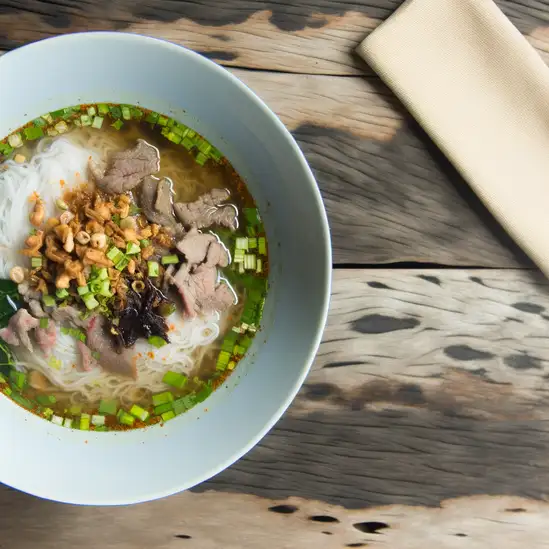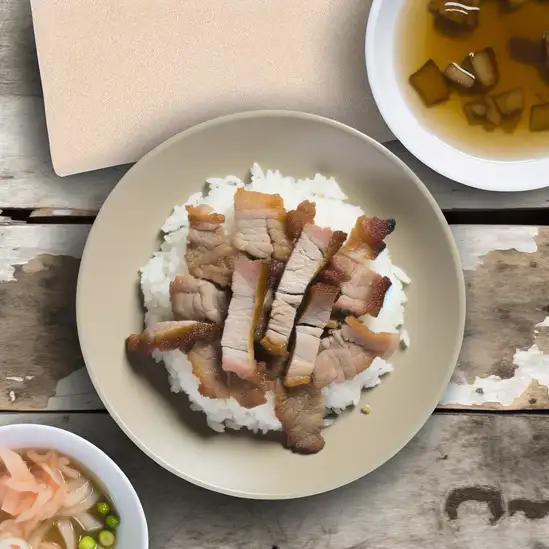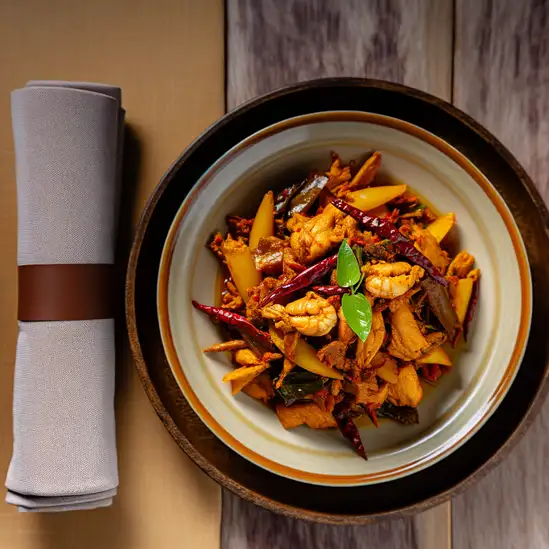


If you find yourself wandering through Cambodia,Battambang feels like stepping into a slower,softer rhythm of life. The city hums with a gentle energy—bicycles clatter along quiet streets lined with colonial-era buildings,their faded pastel walls glowing warmly in the late afternoon sun. There’s a comforting mix of old and new here:monks in saffron robes glide past bustling markets where the scent of grilled street food—lemongrass,garlic,and smoky fish—wafts through the air,inviting you to pause and savor. It’s a place where time stretches just enough for you to notice the little things,like the laughter of children playing near the river or the intricate carvings on ancient temples tucked just outside town. What really makes Battambang stick with you is its genuine,unhurried charm. The locals are friendly without being pushy,always ready to share a story or recommend a favorite noodle stall. The city’s creative spirit bubbles up in unexpected ways—colorful street art brightens quiet corners,and cozy cafés serve rich Cambodian coffee that tastes like a warm hug. If you’re up for a bit of adventure,hop on the bamboo train,a quirky,rattling ride that feels like a joyful dance across the countryside. Battambang isn’t about flashy sights or tourist crowds; it’s about soaking in a way of life that feels both timeless and alive. It’s the kind of place where you can lose track of hours watching the sunset paint the sky over the rice paddies,and somehow,that slow magic stays with you long after you’ve left.
The information on this page is currently being reviewed by Tripkliq and should be used as a guide only
Eng word: Hello
Eng pronunciation: suo sdei
Local language: សួស្តី
Eng word: Goodbye
Eng pronunciation: lea howie
Local language: លាហើយ
Eng word: Thank you
Eng pronunciation: aw kohn
Local language: អរគុណ
Eng word: How much
Eng pronunciation: bon man
Local language: ប៉ុន្មាន
Eng word: Toilet
Eng pronunciation: bong kohn
Local language: បង្គន់
Eng word: Help me
Eng pronunciation: chouy khnhom
Local language: ជួយខ្ញុំ
Eng word: Yes
Eng pronunciation: baat (for males) / chaa (for females)
Local language: បាទ/ចាស
Eng word: No
Eng pronunciation: te
Local language: ទេ
Eng word: Excuse me
Eng pronunciation: som toh
Local language: សូមទោស
Battambang, one of Cambodia's oldest cities, was founded in the 11th century during the Khmer Empire. It served as an important trading and administrative hub for the region.
The city's name, Battambang, translates to 'Lost Stick' and originates from the legend of Ta Dambang Kragnoung, a mythical figure who wielded a magical black stick. His story is central to the city's identity and is commemorated with a famous statue in the city center.
During the late 19th and early 20th centuries, Battambang was under French colonial rule. The city still retains beautiful French colonial architecture, which adds to its charm and historical significance.
Wat Banan, a stunning 11th-century temple located near Battambang, is often referred to as a 'mini Angkor Wat.' It offers visitors a glimpse into the grandeur of the Khmer Empire's architectural achievements.
The Bamboo Train, or 'Norry,' is a unique and iconic feature of Battambang. Originally used for transporting goods and people, it has become a popular tourist attraction showcasing the city's ingenuity and resourcefulness.
Phnom Sampeau, a hilltop site near Battambang, is home to ancient pagodas and caves. It offers breathtaking views of the countryside and is a place of cultural and historical importance.
Known as the 'Rice Bowl of Cambodia,' Battambang has historically been a major agricultural center. Its fertile lands have contributed significantly to the country's rice production for centuries.
Battambang is renowned for preserving traditional Khmer arts, including music, dance, and shadow puppetry. The city is home to the Phare Ponleu Selpak, an arts school that trains young Cambodians in these traditional art forms.
Ek Phnom, a 10th-century temple located just outside Battambang, is a historical treasure. Surrounded by a serene countryside, it provides visitors with a glimpse into Cambodia's ancient past.
In Battambang, the most common Power Adaptor is Type A, Type C, Type G.







A flavorful noodle soup made with rice noodles, herbs, and a choice of meat, often served with lime and chili.

A popular breakfast dish consisting of grilled pork served over rice, often accompanied by pickled vegetables and a side of broth.

A popular breakfast dish featuring rice noodles topped with a green fish gravy and served with fresh vegetables.

A rich and savory dip made from fermented fish (prahok) mixed with coconut milk, minced pork, and spices, usually served with fresh vegetables.

A stir-fried dish made with a fragrant Cambodian spice paste (kroeung) and a variety of meats or vegetables.

A traditional Cambodian fish curry made with coconut milk, lemongrass, and spices, typically steamed in banana leaves.

Stir-fried rice noodles with a mix of vegetables and meat, often garnished with herbs and served with a side of soy sauce.
Siem Reap feels like stepping into a living storybook where ancient history and vibrant local life dance together effortlessly. The moment you arrive,there’s this warm,inviting energy—friendly smiles from tuk-tuk drivers,the hum of motorbikes weaving through bustling markets,and the scent of lemongrass and grilled street food mingling in the air. It’s a place where the past isn’t just preserved behind glass but pulses through every corner,especially when you wander the awe-inspiring temples of Angkor at sunrise,watching the soft golden light spill over intricate stone carvings and jungle vines.
Beyond the temples,the town itself is a lively mosaic of colorful markets,cozy cafés,and lively night bazaars. You’ll hear the chatter of locals bargaining over fresh produce,the clinking of glasses in open-air bars,and the occasional traditional Khmer music drifting from a nearby restaurant. The food scene is a delicious adventure—imagine biting into a crispy,fragrant fish amok or savoring sweet mango sticky rice while sitting under a canopy of twinkling lights.
What really makes Siem Reap special is its balance of old and new,calm and excitement. You can spend your mornings exploring centuries-old ruins and your afternoons relaxing with a foot massage or cycling through rice paddies. It’s a place that invites you to slow down,soak in the stories,and feel connected—not just to Cambodia’s rich heritage but to the warm-hearted people who call it home.
Phnom Penh feels like a city caught between moments—where the past and present hum together in a lively,unexpected rhythm. Walking along the riverfront at sunset,you’ll catch the warm glow of golden light bouncing off the Tonle Sap and Mekong rivers,while the chatter of locals and the distant honk of tuk-tuks create a soundtrack that’s both chaotic and comforting. The air carries a mix of aromas:sizzling street food,fresh herbs,and the faint scent of incense from nearby temples. It’s a place where history isn’t just in museums but etched into the streets and faces of the people.
The city’s character is raw and real,with grand colonial buildings standing shoulder to shoulder with bustling markets and sleek new cafes. You can lose yourself in the maze of Russian Market stalls,where vendors call out in a friendly,rapid-fire Khmer,offering everything from handwoven scarves to spicy grilled meats. At night,the city pulses with energy—bars and eateries spill onto sidewalks,and the smell of lemongrass and chili fills the air as you try dishes like fish amok or fresh spring rolls.
What makes Phnom Penh truly unforgettable is its resilience and warmth. Despite its turbulent history,the city welcomes you with open arms and a genuine smile. It’s a place where every corner tells a story,and every meal,every conversation,feels like an invitation to understand a culture that’s vibrant,complex,and deeply human.
If you’re heading to Cambodia and craving a coastal escape with a laid-back yet lively spirit,Sihanoukville is where you want to land. The moment you step off the bus or boat,there’s this warm,salty breeze that wraps around you,carrying the faint scent of grilled seafood and tropical flowers. The city hums with a mix of chatter from local markets,the distant crash of waves,and the occasional call of street vendors selling fresh fruit or cooling coconut water. It’s a place where the pace slows down just enough to let you breathe in the island vibe without ever feeling bored.
What’s really special about Sihanoukville is how it blends raw natural beauty with a colorful,evolving culture. You’ll find stretches of golden sand fringed by palm trees,where fishermen mend their nets and kids splash in the shallows. At night,the town lights up with a mix of cozy beach bars and lively night markets,where you can savor spicy Khmer dishes or sip on a cold Angkor beer while chatting with travelers and locals alike. The city’s character feels genuine—unpolished but welcoming,with a spirit that invites you to slow down and soak it all in.
Whether you’re wandering through the bustling Phsar Leu market,hopping on a boat to nearby islands,or just lounging on the beach watching the sun dip below the horizon,Sihanoukville leaves you with a sense of calm adventure. It’s a place that feels like a warm hug from Cambodia’s coast,full of stories waiting to be discovered.
Bangkok is one of those cities that grabs you the moment you step out into its bustling streets. There’s this electric energy in the air—a mix of honking tuk-tuks,sizzling street food stalls,and the chatter of locals weaving through markets. The city feels alive,like it’s constantly moving and breathing,yet somehow it balances this chaos with moments of serene beauty,like the golden spires of temples catching the afternoon sun or quiet canals reflecting the sky.
Walking through Bangkok,you’ll be hit by a whirlwind of scents:fragrant jasmine from flower vendors,the sharp tang of lemongrass and chili from street carts,and the sweet aroma of mango sticky rice tempting you at every corner. The colors are just as vivid—neon signs flicker alongside traditional wooden shophouses,and monks in saffron robes glide past modern skyscrapers. It’s a city where old and new dance together effortlessly.
What really makes Bangkok special is its warmth and openness. The people here have a genuine kindness that shines through,whether you’re bargaining at Chatuchak Market or sharing a laugh over a bowl of spicy boat noodles. The culture is rich and layered,from the intricate rituals at Wat Pho to the lively festivals that light up the streets. Visiting Bangkok feels like stepping into a story that’s still unfolding,full of surprises and moments that stay with you long after you leave.
Ho Chi Minh City pulses with an energy that’s impossible to ignore—like the city itself is alive,breathing through its bustling streets and vibrant markets. The moment you step out,you’re greeted by a symphony of honking scooters weaving through the maze of narrow alleys,the sizzling sound of street food grilling on every corner,and the rich aroma of fresh herbs mingling with strong Vietnamese coffee. It’s chaotic but in the best way,a place where tradition and modernity collide in colorful,unexpected ways.
Walking through District 1,you’ll catch glimpses of French colonial architecture standing proudly beside sleek skyscrapers,while locals sip iced cà phê sữa đá at tiny plastic stools,chatting animatedly. The city’s character is raw and real—no polished tourist traps here,just genuine moments and warm smiles. At night,the streets transform as neon signs flicker on,and the scent of grilled seafood and sweet bánh mì fills the air,inviting you to taste the city’s soul.
What makes Ho Chi Minh City truly unforgettable is its resilience and spirit. It’s a place where history whispers from the War Remnants Museum and the Cu Chi Tunnels,yet life moves forward with a youthful,entrepreneurial buzz. Whether you’re savoring a bowl of pho at dawn or exploring vibrant art galleries and rooftop bars,the city wraps you in its embrace,making you feel like you’re part of its ongoing story.
Imagine stepping into a place where the ocean breeze carries the scent of salt and sizzling street food,and the rhythm of life feels both relaxed and vibrant—that’s Da Nang. This city pulses with an easygoing energy,where modern skyscrapers stand alongside ancient temples,and the laughter of locals blends with the gentle crash of waves. Walking along the Han River at dusk,you’ll catch the golden glow of the Dragon Bridge lighting up the night,its fiery breath a spectacle that feels almost magical.
Da Nang’s streets are alive with the aroma of fresh seafood grilling on open flames,mingling with the sweet fragrance of tropical fruits from bustling markets. The city’s character shines through its people—warm,welcoming,and proud of their rich heritage. You can hear the chatter of vendors,the clinking of glasses in cozy cafes,and the distant hum of motorbikes weaving through traffic,all creating a soundtrack that’s uniquely Da Nang.
What really sets this city apart is its blend of natural beauty and cultural depth. Just a short ride away,you can explore the Marble Mountains,where limestone caves and pagodas invite quiet reflection,or relax on My Khe Beach,feeling the soft sand between your toes. And when night falls,the city transforms with lively night markets and riverside bars,where you can savor local dishes like mi quang or fresh spring rolls,each bite bursting with flavor and history. Da Nang isn’t just a place to visit—it’s a place to feel alive.
Tourists may be sold fake or overpriced bus or taxi tickets, often by unofficial agents or touts near transportation hubs.
Scammers may approach tourists asking for donations to support local schools or charities, but the money often does not go to any legitimate cause.
Some money changers may use confusing exchange rates or shortchange tourists during transactions.
Individuals dressed as monks may approach tourists for donations, but they are not real monks and are exploiting the goodwill of visitors.
Unlicensed individuals may pose as tour guides and offer subpar or inaccurate information about Battambang's attractions while charging high fees.
Tourists may be approached by locals claiming to sell high-quality gemstones at a 'special price,' but the gems are often fake or of low value.
Some rental shops may claim damage to the motorbike upon return, even if the damage was pre-existing, and demand excessive repair fees.
Certain restaurants or street vendors may inflate prices for tourists, especially if the menu does not display prices clearly.
Locals may offer to take your photo or pose for a picture and then demand an unexpectedly high payment afterward.
Tuk-tuk drivers may overcharge tourists, especially if they are unfamiliar with local rates. Some may claim the destination is farther than it actually is to justify higher fares.
Cambodia has strict anti-drug laws, and this applies to Battambang as well. The possession, use, or trafficking of illegal drugs, including marijuana, is a serious offense and can result in severe penalties, including imprisonment and heavy fines. Tourists should avoid any involvement with drugs and be cautious of offers from strangers. Even small amounts of drugs can lead to significant legal trouble.
In Battambang, Cambodia, smoking is generally allowed in public spaces, but there are restrictions in certain areas such as government buildings, schools, hospitals, and other designated non-smoking zones. Tourists should be mindful of 'No Smoking' signs and avoid smoking in enclosed public spaces or near children. Smoking in prohibited areas may result in fines.
Vaping is not explicitly regulated in Cambodia, including Battambang, but it is treated similarly to smoking. Tourists should exercise caution and avoid vaping in non-smoking areas or in places where it may be considered disrespectful, such as temples or cultural sites. Importing or selling vaping devices and e-liquids may face scrutiny, so travelers should check customs regulations before bringing such items into the country.
What are other people saying about Battambang?
Recent Social posts about Battambang
There is nothing to show you for now.